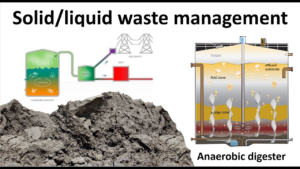Marketing Agency Near Me offers various services that can help businesses attract customers. These services include copywriting, social media management, and email campaigns. They can also assist with search engine optimization.

Choosing the right marketing agency can be tricky. There are many factors to consider, such as cost and experience.
A marketing agency is an excellent resource for businesses that need help achieving their marketing goals. These agencies have teams of experts who can handle everything from content creation to managing social media accounts. They can also help you create a strategy that will meet your business’s specific needs. Marketing is an important part of your business, so it’s vital that you get it right. However, hiring a marketing agency can be expensive. Fortunately, there are ways to save money on marketing agency services.
Marketing agencies price their services based on a number of factors, including scope, client requirements, and overhead costs. Some agencies have set hourly rates, while others charge a monthly retainer. The retainer model is common for clients that need ongoing support. It’s also a great option for small businesses that don’t have the budget to hire an in-house team.
Agencies are often able to reduce their fees by providing value-added services, such as creative direction, project management, and programming. They can also provide a range of marketing services, from SEO to email marketing. Many marketing agencies also offer performance-based pricing, which focuses on ROI and ensures that campaigns are successful.
When choosing a marketing agency, it is important to choose one that has experience in your industry. For example, if you’re in the medical field, you should look for an agency that has worked with similar clients in the past. This will allow them to understand your business and help you achieve your goals.
Another way to save money on marketing agency services is to use a full-service digital marketing agency. These agencies can handle all aspects of marketing, from creating an effective website to generating leads and converting them into customers. They can also create a compelling social media campaign to promote your brand and increase visibility.
In addition to reducing your costs, using a marketing agency will save you time. You’ll have access to a team of specialists who can tackle all of your marketing needs, without you having to spend time hiring new employees or training them. This will free up your time to focus on other areas of your business.
Services
An external marketing agency can provide a fresh perspective that challenges your existing strategies and uncovers untapped growth opportunities. They can also help you create and execute digital marketing campaigns that resonate with your target audience. In addition, they can streamline processes, optimize workflows, and meet deadlines. This can result in improved efficiency and better campaign execution.
Marketing agencies offer a wide range of services, including market research, branding, public relations, social media management, and website development. Some full-service marketing agencies also provide copywriting, email campaigns, and advertising. These companies can also help you manage your accounts and develop a marketing calendar to ensure that your materials are distributed at the right time.
Digital marketing is the process of promoting products or services using online channels, such as search engines, websites, social media, and email. It includes search engine optimization (SEO), pay-per-click (PPC) advertising, content marketing, and email campaigns. Marketing agencies can help you develop and implement a digital marketing strategy that will improve your online visibility and attract more customers.
A marketing agency is a team of professionals who specialize in creating and executing marketing campaigns for businesses. These professionals are experienced in a variety of marketing techniques and can work with a company of any size to reach its goals. Marketing agencies can also provide a variety of additional services, such as analytics and reporting.
They can help you improve your SEO and website traffic, increase your social media presence, and create engaging content for your target audience. They can also help you manage your paid advertising campaigns and optimize your budget based on performance metrics. Additionally, they can help you identify your target audience and create a messaging strategy that will increase your conversion rates.
When selecting a marketing agency, consider the services that they offer and their track record of helping other businesses grow. A good marketing agency will be able to produce results and deliver an exceptional return on investment. In addition, they should have the tools and experience to create an effective campaign in a short period of time. They will also be able to monitor your campaign results in real-time and make adjustments accordingly.
Experience
A marketing agency has a lot of experience working with various clients. These agencies may offer a wide range of services, such as social media management, SEO optimization, email campaigns, and web design. They can also provide analytics and reporting to help businesses track their performance. They can also provide creative solutions to help businesses reach their target audiences.
Marketing agencies can be very fast-paced environments. They must meet deadlines for several projects at once, and it’s not uncommon to work late or through lunch. In addition, marketing agencies often have a seasonally busy period around the end of the year when many campaigns are wrapping up. As a result, it’s important to choose the right agency for your business’s needs.
When choosing a marketing agency, you should look for one that offers a wide range of services and has a deep understanding of the industry in which your company operates. An experienced agency will be able to develop a strategy that suits your business’s unique goals and will work with you to execute the plan successfully.
The best way to find a marketing agency is to ask for references from other companies. Then, review their portfolio and past projects. You can also ask for a quote before you hire them. This will give you an idea of their costs and what they can do for your business.
Choosing a marketing agency can save your company money by eliminating the need to train in-house staff. Additionally, it can eliminate the cost of purchasing expensive marketing tools. A marketing agency can also increase the speed and effectiveness of a campaign by providing a fresh, external perspective.
A marketing agency can help you manage all aspects of your digital marketing campaigns. They can create compelling content, manage your paid ads, and monitor campaign results. They can even create a customized website for your business to maximize your online visibility.
Expertise
Marketing agencies have a wide variety of expertise in different fields, including digital marketing, social media management, search engine optimization, and email marketing. They also have the ability to work with a large number of clients across many industries and niches. In addition, they are often more cost-effective than hiring an in-house marketer or a single specialist.
A specialized marketing agency can help you optimize your online presence and increase sales through effective campaigns and strategies. These experts can boost your website traffic and generate qualified leads by implementing proven SEO techniques, creating engaging content, and managing paid ads. They can also provide email automation software services and nurture leads through lead scoring.
Specialized marketing agencies can also offer other marketing solutions, such as public relations and branding. These services can be useful if you need to improve your company’s image or generate buzz about a new product or service. They can also create a comprehensive strategy that will include all aspects of your business’s marketing efforts.
When choosing a specialized marketing agency, make sure to consider their experience in your industry and the type of marketing services you need. For example, if you need a website redesign, look for an agency that specializes in web design. Also, consider the size of your business and what types of marketing you need.
Lastly, you should consider the budget and timeframe of your project. Different types of specialized marketing agencies have their own set of pricing models, so it’s important to choose the right one for your needs.
Different kinds of specialized marketing agencies exist, and each offers its own unique set of services. Some are full-service agencies, while others specialize in a particular marketing channel or industry. A full-service marketing agency will handle all of your marketing efforts, from planning to execution. It will also be able to provide you with reports and analytics to track the performance of your campaign. This allows you to see the results of your efforts and compare them with those of your competitors. This will help you identify areas of improvement and determine which channels are most effective for your business.




